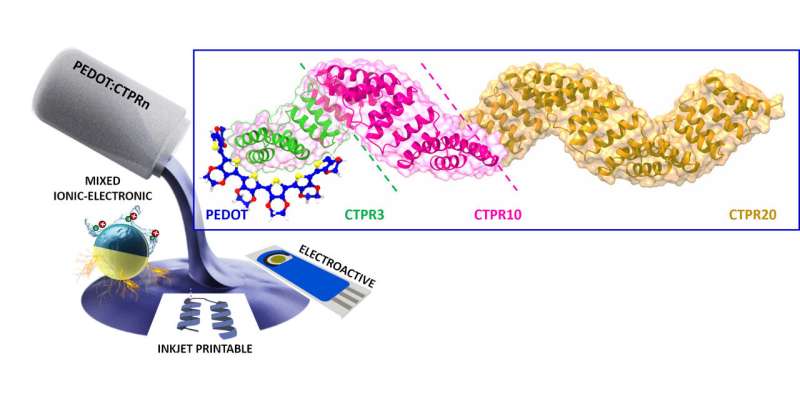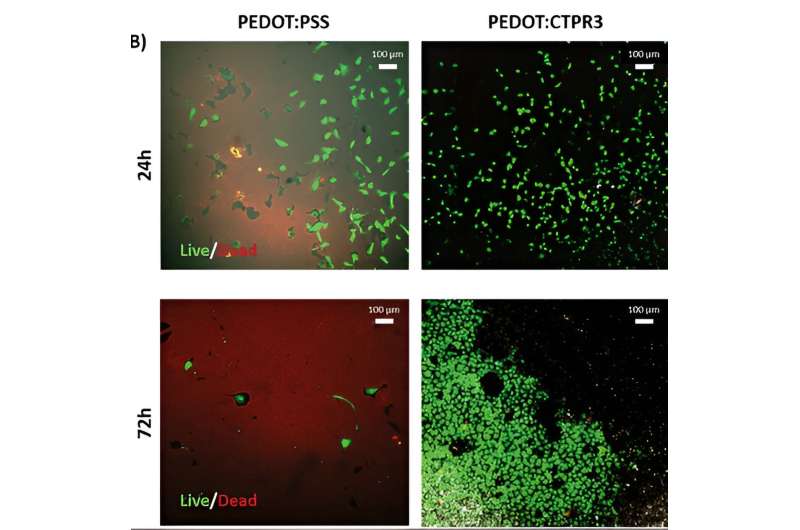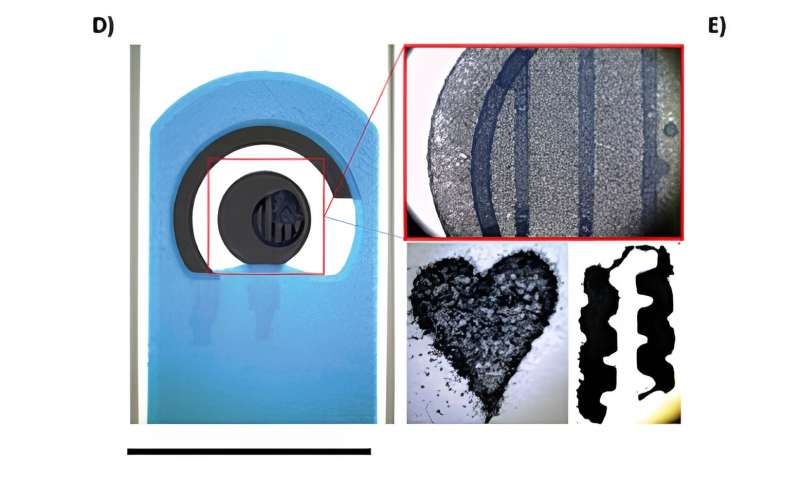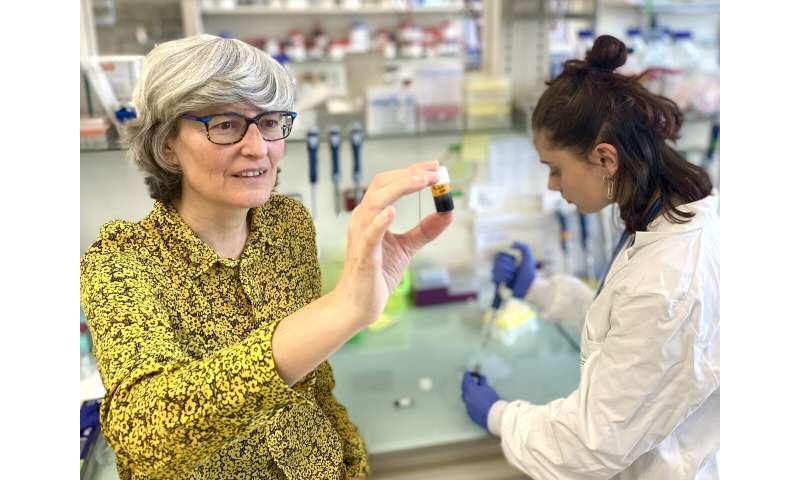This article has been reviewed according to Science X's editorial process and policies. Editors have highlighted the following attributes while ensuring the content's credibility:
fact-checked
trusted source
proofread
New, more biocompatible materials for bioelectronic applications

Bioelectronics is a field of research in which biology and electronics converge. In medicine, for example, an external electric current is used to cure or monitor diseases of the nervous system, and also to monitor biomarkers in situ. Devices made of conductive materials are used for these applications.
The most widely used conductive polymer so far in energy and biomedical applications is PEDOT doped with PSS, known as PEDOT:PSS. Despite its exceptional properties, new conductive materials that can improve some of its limitations, such as biocompatibility, still need to be developed.
A study conducted by CIC biomaGUNE's Biomolecular Nanotechnology group is proposing a mechanism for doping PEDOT using a robust engineered protein (PEDOT:Protein); the outcome is a hybrid material with ionic and electronic conductivity, which is quite similar to PEDOT:PSS in some cases. The paper is published in the journal Small.
"This is the first time that an engineered protein has been used as a dopant for a conductive polymer; the dopants used so far restrict integration with cells or tissue and are also difficult to modulate," explained Ikerbasque Research Professor Aitziber L. Cortajarena, the group's lead researcher and scientific director of CIC biomaGUNE.
Cortajarena pointed out that because these engineered proteins are biocompatible, biodegradable and sustainable, and offer interesting functions in cellular mechanisms, this research has managed to take "a step forward in the development of a new family of materials that are more biocompatible, sustainable and offer a much higher degree of biological integration, due to the biocompatibility of the proteins."
The possibility of using "conductive materials comprising proteins clearly improves the interface and biointegration between the conductive biomaterial and the tissue or cells where this material is positioned," she added. They have also successfully optimized the generation of printable inks, as a result of which their electroactivity properties remain after printing.

This new family of materials is crucially important in the development of new applications or new uses in bioelectronics. "They will make it possible to advance towards limitations that cannot currently be tackled due to the simplicity of the available materials," said CIC biomaGUNE researcher Antonio Dominguez-Alfaro.
It was pointed out that the number of applications is proportional to the imagination of the person engineering these materials, but a few potential ones were mentioned. "Electrodes could be made available for brain implants that help control tremors resulting from Parkinson's disease or seizures caused by epilepsy. They could also be applied to skin electrodes used in wearable devices, such as watches, that measure vital signs such as heart rate."
What is more, one of the great advantages of these materials is that they could recognize biomolecules such as glucose, for example; they "would be able to 'react' to it and measure it through sweat, which is less invasive than current methods, for example." Finally, these materials could be used in batteries that are more biocompatible and accessible to contact with the body.
-

This new conductive biomaterial has been used to produce printable inks, and its inkjet printing, which preserves its electroactivity properties after printing, have been optimized. The image shows examples of some of the printing patterns made on a paper substrate, on photographic paper and by ink jet on a screen-printed electrode. Credit: CIC biomaGUNE -

Professor Aitziber L. Cortajarena with a member of her team. Credit: CIC biomaGUNE
e-Prot, a European project to develop engineered conductive proteins
This study has been carried out within the framework of the e-Prot project, part of the FET Open 2020 (Future and Emerging Technologies) program, and led by Professor Aitziber L. Cortajarena. The main aim of the project is to develop a technological platform for bioelectronics systems based on proteins and their ability to conduct electricity efficiently.
So starting with the manufacture of protein-based conducting structures and materials, what is being offered is an alternative to traditional technologies used in the electronics industry.
More information: Antonio Dominguez‐Alfaro et al, Engineering Proteins for PEDOT Dispersions: A New Horizon for Highly Mixed Ionic‐Electronic Biocompatible Conducting Materials, Small (2023). DOI: 10.1002/smll.202307536
Provided by CIC biomaGUNE



















